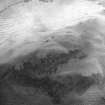Pricing Change
New pricing for orders of material from this site will come into place shortly. Charges for supply of digital images, digitisation on demand, prints and licensing will be altered.
Dunsyre Hill
Cultivation Terrace(S) (Period Unassigned), Rig And Furrow (Medieval) - (Post Medieval)
Site Name Dunsyre Hill
Classification Cultivation Terrace(S) (Period Unassigned), Rig And Furrow (Medieval) - (Post Medieval)
Canmore ID 48821
Site Number NT04NE 2
NGR NT 0730 4890
NGR Description Centred on NT 0730 4890
Datum OSGB36 - NGR
Permalink http://canmore.org.uk/site/48821
- Council South Lanarkshire
- Parish Dunsyre
- Former Region Strathclyde
- Former District Clydesdale
- Former County Lanarkshire
NT04NE 2 0730 4890 (Centred).
(Centred: NT 073 489) A large and important group of cultivation terraces lies on the lower E and SE slopes of Dunsyre Hill, between c 900' and 1100' OD. The NE side is bounded by a vertical stone dyke; along its lower edge lie old and irregular rig-cultivation; and to the SW is a shoulder of the hill on to the top of which the uppermost terraces evidently once extended, though they are now almost washed away. The main terraces sweep right across the site and are set obliquely to the contours, while in the upper part of the group, a change in profile of the hill results in the terraces - which remain parallel with those below - taking on an almost vertical direction. At their SW ends, which are canted upwards, the main terraces are generally narrow, but they broaden out as they descend and in their broadest parts are sometimes subdivided by low subsidiary lynchets. At their lower ends, the terraces assume the appearance of broad rigs; negative lynchets vary in height from 3' to 8'. Evidence exists at four points that a terrace has been broadened by digging away the one above it and by correspondingly raising the negative lynchet beyond; this may perhaps have been done to make the terraces more for longitudinal cultivation in rigs at a later period. Excavations showed no signs of artificial revetment.
A Graham 1939; R Eckford 1928
As described - an outstanding group of about twenty-four terraces.
Visited by OS (DWR) 28 July 1971.




































